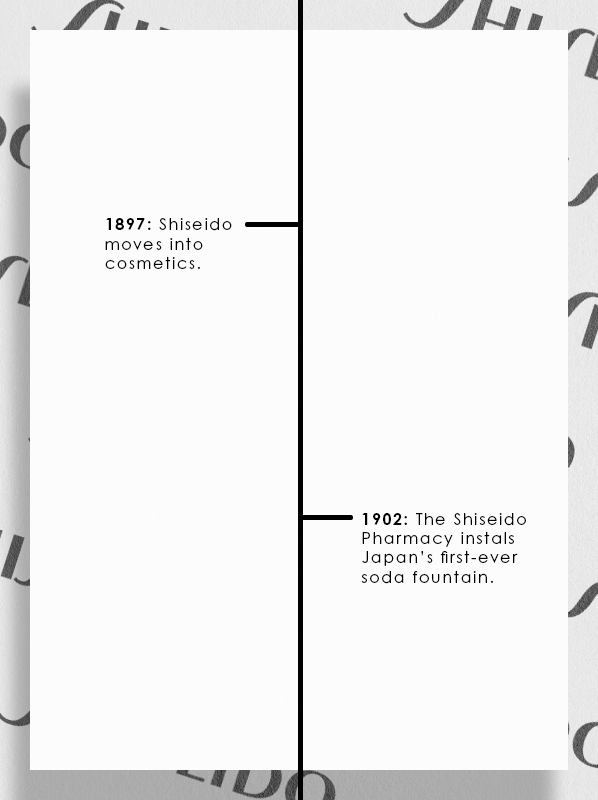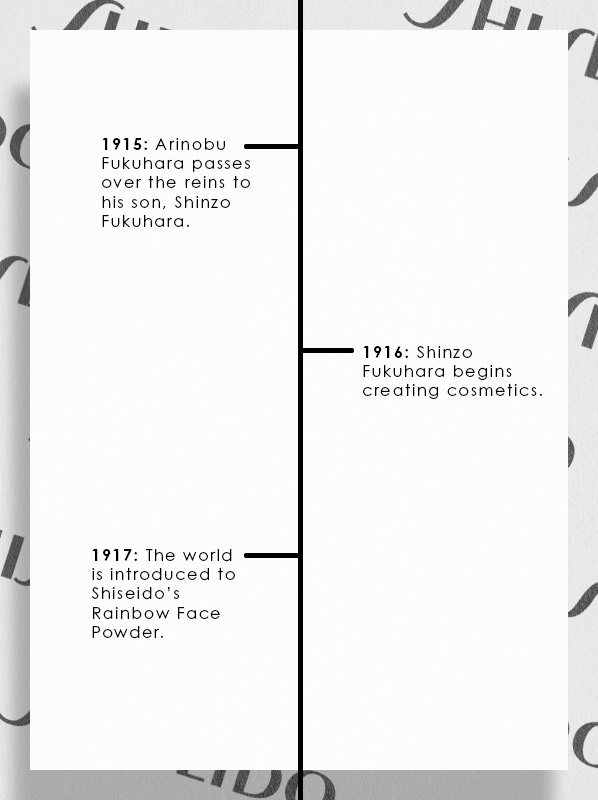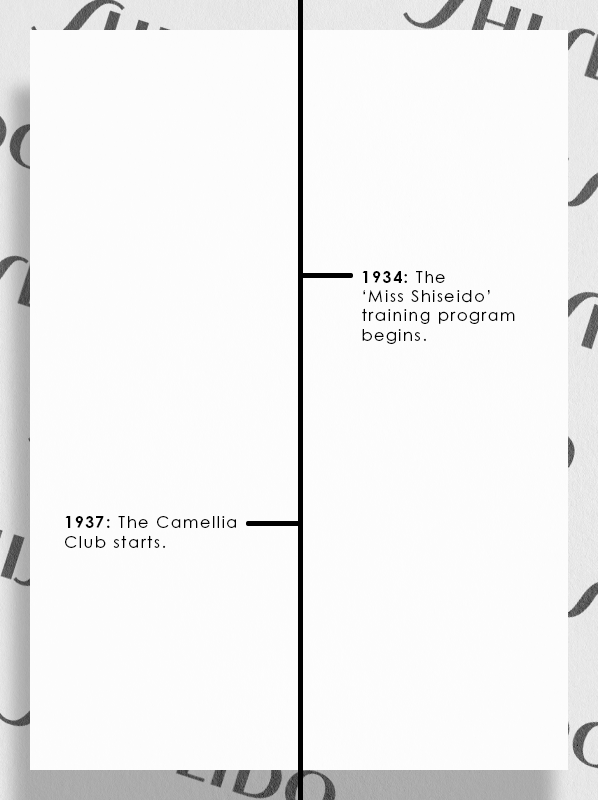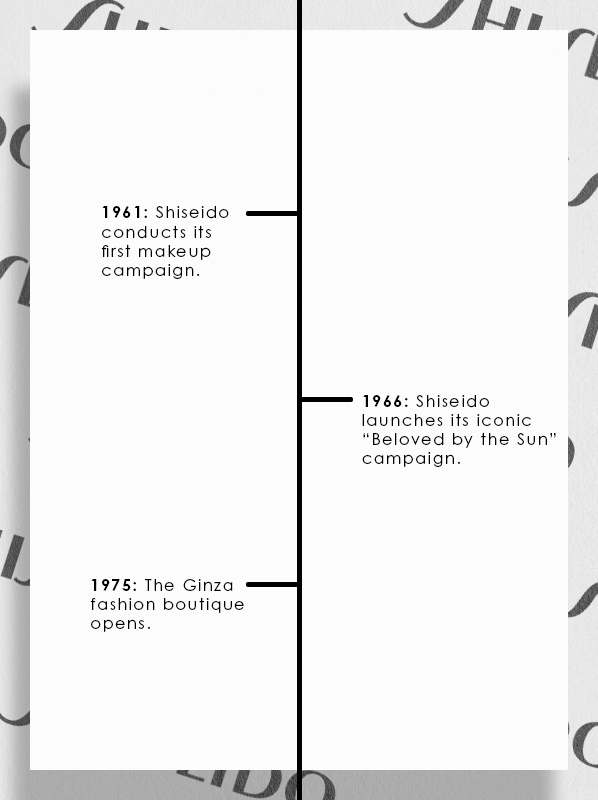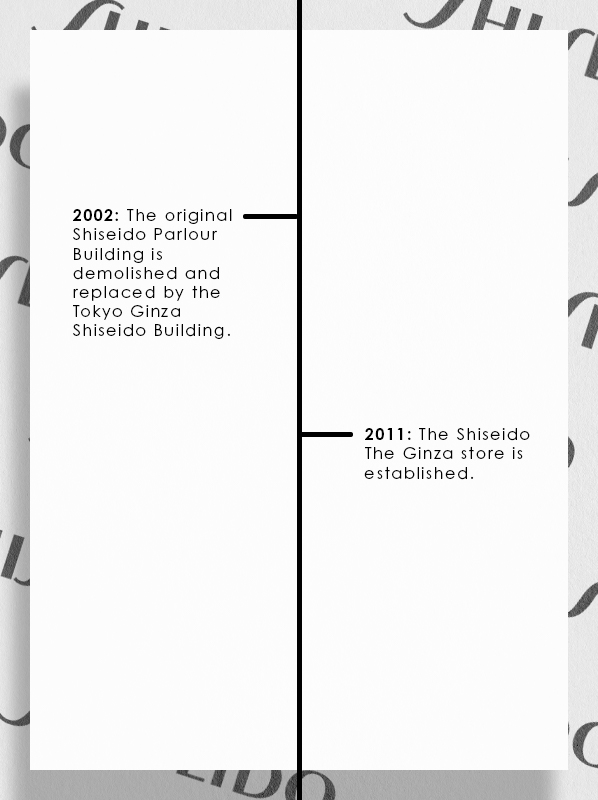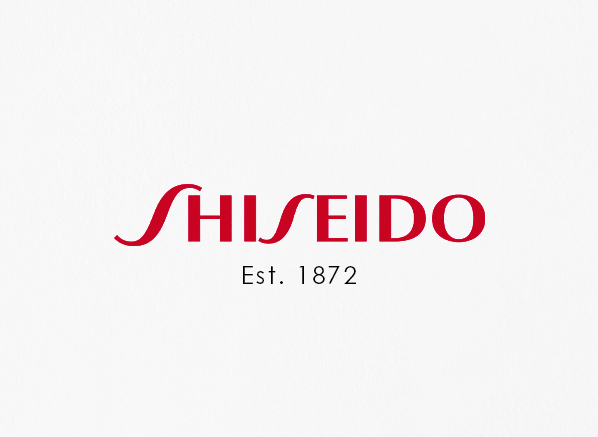

Out of all of the brands to feature in my ‘history‘ series, Shiseido is one of the oldest – it’s been pipped to the post by GUERLAIN (by 50 years.) And I’d also say that it also has one of the most interesting pasts out of all the luxe brands to feature in the series. Read on to find out all about the brand with our detailed edit on the history of Shiseido…
1870s-80: Shiseido Is Founded
Shiseido’s roots date all the way back to 1872 when Arinobu Fukuhara, the son of a traditional Eastern herbal medicine doctor, established Japan’s first private Western-style pharmacy. Fukuhara Arinobu was a trained pharmacist interested in Western medicine; his successful military career also saw him become the Japanese Navy’s Chief Pharmacist before he retired from the military to start a new venture: his pharmacy.
Arinobu Fukuhara’s time in the Navy gave him first-hand experience in the failings of the tooth cleansing powder popular in the 1800s. Not only did these burnt-salt-and-limestone-based powders taste awful (I can only imagine how bad), but they were also anything from travel-friendly. So, in 1888, Shiseido introduced Japan to the Fukuhara Sanitary Toothpaste, a toothpaste in cake form – and yes, thankfully, it tasted and smelled a lot better! Fun fact: this release is where ‘toothpaste’ originated.
1890s-1900s: Shiseido Moves Into Cosmetics
In 1897, Shiseido ventured into the cosmetics industry with Eudermine and, in doing so, changed the world of skincare as we knew it. The cosmetics commonly available during the Taisho era were typically medicinal-looking formulations sold in dark bottles. But Shiseido put the ‘beauty’ in ‘beauty industry’ with Eudermine, a ruby-red skin-softening lotion that’s still available today (although in a revamped and advanced formulation). Its design stepped away from the traditional Japanese apothecary style to offer a stylish, elegant and feminine design that featured a multifaceted neck, a floral label and a glamorous red bow.
The Shiseido Pharmacy in Tokyo’s Ginza District continued to grow and innovate during the turn of the century; in fact, 1902 saw the introduction of Japan’s first-ever soda fountain, which was brought in from a U.S. manufacturer and installed behind the counter. Fukuhara even went as far as importing American ice cream dishes, glasses and straws – I can only imagine how much of a buzz the pharmacy must have created! In fact, Shiseido’s soda fountain and ice cream proved so popular that they were even mentioned in novels and publications of the time.
1910s: Shiseido’s Logo Blossoms Into Shape
During this decade, Shiseido continued to grow its beauty offerings. Notably, the Hanatsubaki Hair Oil grew in popularity as the Western-style chignons that became popular in the early 20th century also inspired Japanese styles.
Named after the camellia, the Hanatsubaki contained pure camellia oil as its main active. The popularity of this hair care launch ultimately inspired the floral design of Shiseido’s corporate logo in 1915, which still represents the brand today, as the hawk logo of the pharmacy was given a more beauty-related emblem. Created by Arinobu Fukuhara’s son, Shinzo Fukuhara, the new logo was inspired by the delicate image of a camellia floating in a glass of water, offering an emblem with a distinctly more Western look with an art nouveau edge.
But that wasn’t the only thing that Shinzo was busy with at this time! In the same year that the logo’s redesign was unveiled, Shinzo Fukuhara took over Shiseido. The following year, he began creating cosmetics before establishing an independent cosmetics department. An exciting addition to the Japanese retail market, the cosmetics store was opened within spitting distance of his father’s original pharmacy. The building offered a three-step approach to beauty: the store was on the ground floor, the cosmetics were produced on the first floor, and the Advertising Creation Department and the Testing Room lay on the second floor. Shiseido’s package designs, posters, newspaper and magazine advertisements were designed in the Advertising Creation Department, while the Testing Room was dedicated to developing and improving new and existing products; this would later become a laboratory and eventually a chemical research institute and is now the Shiseido Research Centre.
It’s fair to say that the business flourished under Shinzo’s guidance, and in 1917, the world was introduced to Shiseido’s Rainbow Face Powder. At this point in history, Japanese women would have worn nothing other than white face powder, so launching a face powder with no less than seven colours was truly revolutionary. Designed to match each person’s skin tone, the multicoloured powder offered an alternative to the traditional Japanese kimono look as it grew in popularity with the geisha of the time.
1919 saw the Shiseido Gallery open; this gave the brand a space to showcase their seasonal wear, such as scarves and fans. But it soon developed into a space for young avant-garde artists to show their work; to this day, the Shiseido Gallery remains the oldest non-profit gallery in Japan.
1920s: Shiseido Drives Beauty News
In 1922, Shinzo Fukuhara opened the Shiseido Hair Styling Salon, which was led by American hair stylist Helen Grossman. First popularised in the States, the mimikakushi look (which translated to mean ‘covering the ears’) soon became a classic.
The very name of Shiseido also gets a makeover at this time – and by that, I mean the way it appears in print; a pioneering example of corporate identity in Japan, Shiseido gains its very own font in 1923, including a distinctive letter S influenced by the art nouveau movement. This logotype would eventually be revamped three times throughout its history, but it is still a clear descendant of the second font used in ’27.
By this point, Japan’s love of beauty was well-established, so Shiseido started to produce the Shiseido Geppo magazine in 1924 to feed Japan’s hunger for beauty, fashion, trends and art news during a time when there really wasn’t anything else like it. And yes, you can still get the periodical today – it’s been known as the Hanatsubaki magazine since 1937, though.
Sadly, the founder of Shiseido, Arinobu Fukuhara, died on the 30th of March 1924.
1930s: The Changing Face of Beauty
Forget Miss World; in 1934, it was all about ‘Miss Shiseido’. The nine women who gained the title were given seven months of training in the following: beauty techniques, makeup science, dermatology, physiology, public speaking, dress, fashion, singing, and Western art and manners. They then performed in the “Theatre of Modern Beauty” show which paired beauty knowledge with a variety performances, proving to be a huge success all over Japan. After the curtain closed, the nine women provided beauty consultants with audience members, paving the way for personalised beauty routines.
Three years later, The Camellia Club started. Camellia Club Parties were held nationwide, offering beauty lovers a chance to practise new beauty regimens and exercises, learn from experts and buy new Shiseido products! Camellia Club members also received coupons to use in-store; when they purchased a certain amount of products, they earned commemorative gifts that are now highly sought-after collectables.
1940s-50s: Shiseido Goes International
Shiseido’s original 400 square-metre testing-room-turned-research-room was renamed the Shiseido Chemical Research Centre when it was completed in 1939. Headed up by Mitsuo Iyoda (who would become Shiseido’s third president), the centre was home to 23 leading researchers. But sadly, tragedy was just around the corner; on March 10, 1945, the centre was lost in the fire of the Great Tokyo Air Raids. It took over three years to rebuild and reopen the centre when it was then led by Dr. Tessaku Ikeda, who applied a pioneering scientific approach to beauty.
In 1957, Shiseido’s first office outside of Japan opened its doors in Taiwan, creating a snowball effect over the next 25 years as a subsidiary was created in Hawaii in ‘62, the United States in ‘65, Italy in ‘68, and France in 1980. Today, the brand is present in 88 countries and regions.
1960s-70s: Shiseido Meet Changing Beauty Needs
In 1961, bright, sunny colours were deemed the lipstick style of the moment, so Shiseido created their first seasonal promotion to appeal to trend-loving beauty fans: The Candy Tone Makeup Sale.
By 1966, the concept of healthy, tanned skin had grown in popularity, so Shiseido tapped into this market with the help of model Beverly Maeda, who was the face of their “Beloved by the Sun” ad campaign – their first-ever to be shot overseas in Hawaii. The poster was rumoured to be constantly stolen from stores!
Shiseido was also ahead of the game when it came to summer foundation. Noticing that women struggled with slippy, slidey melting makeup during the summer (something we’re all familiar with), Shiseido launched the soon-to-be-best-selling Beauty Cake, a new foundation that marked a shift in the world of foundation as it was specially designed for those hot, sweaty summer days.
Shiseido had certainly established themselves as pioneers in the cosmetics world by this point, and it’s a title they wanted to hold to, so in 1968 their new research facility – known simply as the Shiseido Research Centre – was completed. Shiseido’s research labs have continued to grow over the years and with close to 600 researchers and staff members, they now operate one of the largest research facilities in the world.
While the world welcomed in the 70s, Shiseido was busy working on an exciting new venture; in 1973, Shiseido introduced the French dining scene to Japan when the Michelin star-winning L’Osier restaurant was opened.
In March 1975, Shiseido opened a fashion building called “The Ginza” on the site where Shinzo Fukuhara had opened his cosmetic store all those years ago. This premise was home to a fashion boutique, a salon, and several other boutiques; it would even go on to include a gallery and a children’s clothing store in years to come.
Shiseido continued to support the arts throughout this decade, reflected in the opening of the Shiseido Art House in 1978. The space showcases Shiseido’s art collection while hosting several exhibitions over the years; however, the heart of the collection comprises artwork from painters, sculptors and craftspeople who have previously exhibited at the Shiseido Gallery in Ginza, Tokyo. The art museum was renovated in 2002 and is still a popular destination to this day.
1980s: Hello, Hyaluronic Acid
When Shiseido entered the French marketplace in 1980, they hired French art director Serge Lutens (yes, the man behind the perfume line) as an image creator. With an invaluable breadth of knowledge from his time at Vogue and Elle, the trendsetting Serge Lutens was the perfect choice to help develop Shiseido’s brand image.
With a sleek new look, it only seemed natural that Shiseido’s next step would be producing a sleek new ingredient. Now, we all know and love the powerhouse active ingredient hyaluronic acid – it’s world-renowned thanks to its moisturising, skin-plumping properties – but it’s not commonly found in nature, and until 1983, it was generally sourced from roosters’ combs. But what does that mean for those in the 80s? Effectively, it was pretty tricky to get your hands on. Until Shiseido, that is. In 1984, Shiseido became the first brand to produce HA on a large scale, using a fermentation process that uses the microorganism streptococcus zooepidemicus. This groundbreaking approach allowed Shiseido to supply HA to buyers around the world.
1985 saw the opening of Shiseido’s Gotanda Building, which would go on to house Shiseido’s Beauty Science Research Centre and the Shiseido Academy of Beauty and Fashion (SABFA) in 1986, offering a space to train professional beauty artists and aestheticians; graduates of SABFA continue to be highly respected professionals in their field even today.
1990s: Birthday Celebrations For A Skincare Icon
Shiseido’s work with hyaluronic acid didn’t stop in the 80s; in 1997, the brand found a way to manipulate the molecular structure of HA to boost its moisturising abilities and enhance its affinity to the skin; you’ll find the resulting Super Bio-Hyaluronic Acid in many of Shiseido’s skincare formulations even now.
1997 was an exciting year for the brand; not only were they driving the future of HA, but they were also celebrating their heritage. As part of Eudermine’s 100th anniversary, the iconic red lotion went international. For the global launch and the Japanese relaunch, Serge Lutens designed a slim, rectangular bottle made of ruby red glass, finished with a red stopper that recalls the heart of the Japanese flag.
2000-10s: Shiseido Gets Bigger And Better
Remember the soda fountain that I mentioned at the start of this History of Shiseido edit? Well, over the years, it became so popular, it moved into a building of its own. In 2001, the original Shiseido Parlour Building was demolished and replaced by the existing Tokyo Ginza Shiseido Building – but you’ll still find an ice cream parlour there, of course!
In 2011, the Shiseido The Ginza store was established on the site of Shiseido’s original Cosmetics Division. The store not only offers a range of Shiseido’s existing formulations, but it also showcases developments in the field of cosmetics. But The Ginza isn’t just a store; it’s an experience. While the staff are well versed in Omotenashi – the Japanese art of making a person feel welcome – the store also features cutting-edge technology, including the “Mirai” virtual makeup simulator. This shows visitors exactly how makeup colours would look on their skin – no testers are required!
2020 & Beyond: The Future of Shiseido
2022 was a very exciting year for the brand; they celebrated their 150th anniversary. They might have been around for a century and a half, but that doesn’t mean they’re stuck in the past. As a brand, they’re all about innovation. You only need to take a quick browse of their news updates to see why – it’s packed with groundbreaking results from Shiseido-led studies, updates on new technologies and posts celebrating the awards their researchers have recently won. Bring on the 200th-anniversary celebrations!
Over to you!
Do you have a question about the history of Shiseido that we haven’t answered? Tweet us @Escentual with your query!



